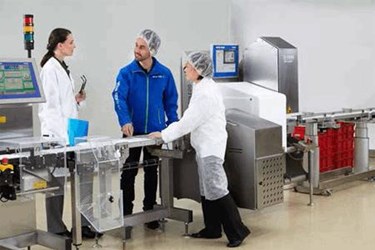To Test Is Human, But Verification Is Divine

By Bob Marshall, Chief Editor, Med Device Online

This article is the third in a five-part series examining vital relationships in each stage of medical device development. Read parts one and two here.
Early conceptual work during the product development process gives way to documented specifications that become the basis of your design. In turn, the design yields functional prototypes of your device. Now what? You are ready for the third phase of product development: verification. The verification effort ensures that your original concept can safely and effectively perform its diagnostic or therapeutic functions. As in the previous phases, you need good partners to help ensure that your design output meets your design input requirements.
Certification And Capacity Are The Keys To Selecting Compliance Testing Labs
If your medical device design includes electronics, perhaps the most important relationship you will have in this phase is with your compliance testing lab. Electrical medical devices must be tested for product safety, per IEC 60601-1, and for electromagnetic compatibility (EMC). Device developers may have some of the equipment necessary to conduct initial screening at their facilities, or may have a small lab near them that does preliminary testing, but when it is time to document product compliance with the required standards, a certified partner is necessary.
It also is important to make sure that your compliance lab has enough capacity to handle your business in addition to its other customers, and to schedule your testing as far in advance is possible. This is especially true when revisions to the testing standards are implemented. I recall when the third edition of IEC 60601-1 was implemented, many device developers were scrambling to get their designs and history files updated, and to find a lab with capacity to complete the testing. As the implementation deadline approached, device companies faced the reality of having to stop shipping their devices if third-edition IEC-60601 certification could not be completed in time.
Another aspect of the relationship with your compliance testing lab may be its capacity for environmental testing — gauging the device’s performance across a range of operating and storage temperatures, humidity, and any other specified environmental conditions. This testing can be accomplished in-house by larger medical device companies, which can afford to purchase the necessary testing chambers and equipment, but many smaller companies will need an outsourced partner. In either case, understanding how best to simulate device operation during operational tests, or creating real-world conditions for storage tests (including packaging), requires close collaboration between design and test engineers.
You Never Get A Second Chance To Make A Good Clinical Impression
When clinical data will be necessary for clearance or approval of your medical device, you need to establish a productive relationship with a Clinical Research Organization (CRO). CROs help with many aspects of clinical trials, including preparation of clinical trial protocols, coordination with a statistician, monitoring, auditing, and safety monitoring. It is very important that the CRO operates as an extension of your organization during the trial. The CRO provides an element of independence in conducting the research, but must represent your interests.
You need a CRO partner that is focused on protection of the human subjects involved in the trial, and will ensure the integrity of the data obtained from the study. There is no replacement for experience when considering a partnership with a CRO; choose an experienced partner with a firm commitment to quality. You may not get a second chance to collect the data necessary to get your device on the market.
Testing The Little Things Makes A Big Difference
Another important verification partner is a microbiology testing lab. Perhaps the most vital consideration with this partner is biocompatibility testing of your medical device. All medical devices that have direct contact with skin, mucous membranes, blood, or bone must be tested for various biological effects, depending on the length of contact.
Biocompatibility testing requirements are outlined in international standard ISO-10993-1, Biological Evaluation of Medical Devices. Application of this standard, specific to medical devices, is further clarified by the FDA in a guidance document issued in June 2016. This guidance augments some of the requirements of ISO-10993-1, but also provides context for evaluating all potential biological effects of the device on the human body within a comprehensive risk management process. When evaluating microbiology labs as potential service providers, ensure they are well-versed in the ISO-10993 standard series, and that they have reviewed and adapted to the relatively recent FDA guidance document in this area.
Discuss with prospective labs their previous approaches to the optional testing that FDA has indicated for some biocompatibility tests, as well as whether they have been able to develop rationale to avoid performing some of these tests. Remember that every additional test incurs additional cost, additional time invested, and the consumption of additional test devices. Your microbiology lab should help you achieve the results necessary for clearance or approval in the minimal amount of time, with the fewest samples, and at the lowest total cost. Testing inconsequential things can add a lot of additional cost.
You may also need help from your microbiological testing partner in other areas. If your device is manufactured in a controlled environment or cleanroom, they can help with environmental testing, helping to commission the space and to conduct ongoing environmental monitoring. Also, if your device will be terminally sterilized prior to use, you will need microbiological testing for bioburden on manufactured product, and for sterility assurance and validation.
Discussing all of your requirements with your microbiological testing partner will provide a complete understanding of the services required, and can possibly provide for some reduced cost by bundling all of them together.
